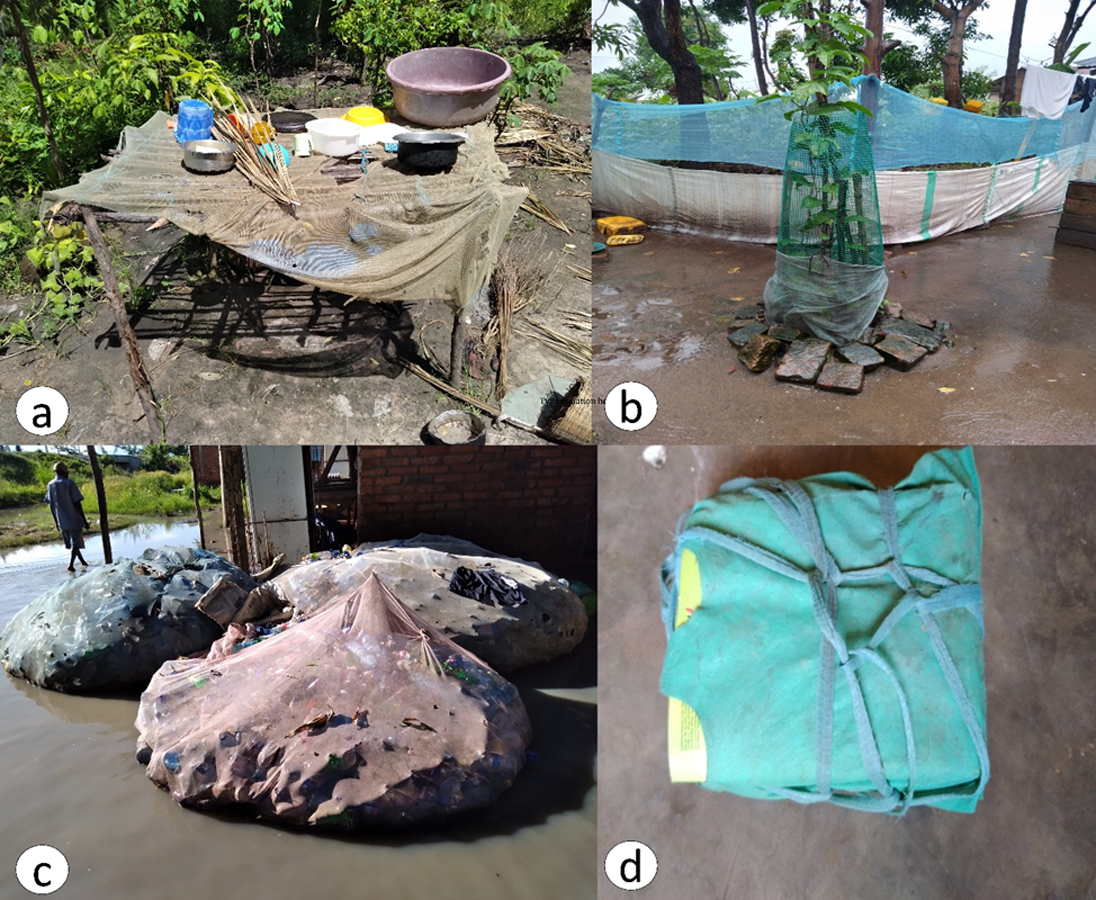
MALARIA: Study links improper disposal of old bed nets to pollution, health risks

Improper disposal of old bed nets can result in a rapid increase in environmental pollution and cause potential health risks to communities, a recent study conducted in Tanzania has revealed.
The study, conducted by Ifakara Health Institute scientists, calls for “strengthening awareness and education” among communities and key stakeholders on proper disposal practices of used bed nets. This, they argue, is vital not only for enhancing malaria control efforts but also for preventing environmental pollution.
Fighting malaria with bed nets
In sub-Saharan African (SSA) countries, particularly in Tanzania, insecticide-treated nets (ITNs), notably long-lasting insecticidal nets (LLINs), have long been championed in the fight against malaria. However, this study which has been published on the PLOS One Journal highlights a concerning issue: the challenges associated with the proper disposal of old LLINs in rural Tanzanian communities.
Citing staggering statistics in their study, the Ifakara scientists point out that between 2004 and 2020, over 2.3 billion ITNs were distributed globally, with SSA receiving the most share (86%) of all distributed insecticide-treated nets.
“Tanzania is among the top five recipients. This massive volume of ITNs, particularly long-lasting insecticidal nets (LLINs), placed in circulation could lead to a rapid increase in solid waste litter and environmental pollution in SSA countries, where solid waste management remains a major challenge.”
Although LLINs are a crucial tool in preventing malaria transmission by protecting individuals from mosquito bites, particularly in malaria-endemic regions, their improper disposal contributes to environmental pollution, impacting ecosystems and public health, noted the scientists.
Proper disposal awareness
The study, conducted in early 2022 in Kilombero and Ulanga districts in south-eastern Tanzania, revealed a significant widespread lack of awareness among community members and key stakeholders regarding the proper ways to dispose of old LLINs. This was also highlighted as the key cause for the improper disposal.
Out of the 384 participants surveyed, 97.0% admitted to being unaware of the WHO recommendations for proper disposal of old LLINs. This lack of awareness extended to key informants, such as local leaders and health workers, who also demonstrated a complete lack of knowledge regarding the WHO guidelines.
What are the WHO guidelines?
The World Health Organization (WHO) guidelines outline several recommendations for proper ways of disposing or handling old LLINs. These include continuous use of bed nets until replacement, refraining from disposing of old LLINs in water bodies, collection of the old LLINs for disposal by NMCP; incineration of old LLINs; and formulating guidelines, policies, and regulations by the NMCP in collaboration with national environmental authorities.
Despite these guidelines, prevalent improper disposal methods such as burning persist as the study discovered, posing significant environmental and health risks.
Disposal practices in communities
Through mixed-methods approaches, Ifakara scientists assessed the communities’ disposal practices of old LLINs. The findings revealed the most common methods of disposal as burning (30.7%) and dumping them into garbage pits (14.8%), both of which pose environmental and health risks due to the release of toxic fumes and contamination of soil and water sources.
Additionally, 12.2% of respondents reported alternative uses for retired LLINs, such as repurposing them as ropes for tying or covering items, crops and seedling fencing, for protecting chickens from predators, and for fishing activities. Other alternative uses included curtains, recycled bottle carriers, washing sponges, bathing sponges, floor scrubbers, and dish dryers.
“These (predominant disposal practices) were primarily influenced by the lack of official guidelines regarding the appropriate disposal of old or deteriorated LLINs. This lack of clear guidance led community members to dispose of their old or worn-out bed nets based on their own convenience... If there were a clear and well-known guideline, it could help reduce this problem.”
The scientists attributed the widespread lack of awareness despite the existence of WHO guidelines as a potential barrier to guideline dissemination and emphasized the importance of enhanced communication and accessibility in disseminating guidance related to public health, particularly in LLIN disposal.
Community engagement, education
To tackle the challenges associated with LLIN disposal, Ifakara scientists recommend concentrated efforts to raise awareness and educate communities on proper LLIN disposal practices writing, “Strengthening awareness and education on proper LLIN disposal practices among community members and key stakeholders is essential for enhancing malaria control efforts and preventing environmental pollution.”
Furthermore, the study also highlighted a willingness among community members to comply with guidelines, underscoring the importance of community engagement. This being the case, the scientists recommended the integration of community-driven initiatives in developing comprehensive strategies for proper LLIN disposal
“Collaboration between relevant authorities and local communities is of utmost importance in the development of comprehensive strategies for the proper disposal of old LLINs, especially considering the increasing annual distribution of these nets.”
Integration into policies, programs
While community engagement and education are crucial, the scientists note that the integration of these initiatives into policy and program frameworks is equally imperative.
They underscore that policies and guidelines should be established to regulate alternative uses of LLINs, ensuring they align with malaria control efforts and environmental sustainability goals (SGD goals 6 on clean water and sanitation for all, 14 on life below water, and 15 on life on land).
“It is crucial to approach these alternative uses with care and consideration. While repurposing bed nets for various purposes can provide valuable solutions, it must be done in a manner that safeguards their primary function in malaria prevention and respects environmental sustainability.”
“Policies and guidelines should be established to ensure that any alternative uses of bed nets do not compromise their effectiveness in controlling vector-borne diseases or have adverse environmental impacts.”
Overall, the study underscores the importance of addressing LLIN management challenges to enhance malaria control efforts and environmental sustainability.
Ifakara scientists in the study
The study was conducted by Ifakara Health Institute scientists led by Sheila Msangi, the lead author. Sheila collaborated with colleagues Winifrida Mponzi, Letus Muyaga, Joel Nkya, Yohana Mwalugelo, Hajirani Msuya, Dickson Lwetoijera, and Emmanuel Kaindoa.
Read the publication here.
